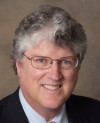IC-MAM features a number of Keynotes. The following talks have already been fixed. Please stay tuned for further updates and subscribe to our mailing list and follow us on LinkedIn.
Radio Frequency Surface and Bulk Acoustic Wave Devices for Mobile Communications, What are Next? |
|

|
Ken-ya HashimotoProfessor |
|
Radio frequency (RF) surface and bulk acoustic wave (SAW/BAW) devices are indispensable in mobile communications. Although many decades have been passed from their first proposal, their recent evolution is remarkable. Authorities often taught us that theoretical limits were approaching, but many of them have already been overcome by innovative ideas. Technologies are really market-driven. This talk starts from overview of current RF SAW/BAW devices. Their market was expanded dramatically by their massive use in 4G smart phones, and now the hottest research topic is ultra wideband and high frequency filters for the 5G new radio. Currently use of an extremely thin LiNbO3 or LiTaO3 plate is studied aggressively for developing incredibly high performance SAW/BAW devices. This technology has already been applied to mass production, and demonstrated drastic loss reduction in addition to temperature compensation. Proper choice of the device structure may offer giant electromechanical coupling, super high wave velocity and/or excellent power handing. What are next? We may not know how, but demands are clear. In addition to items given above, size and price reduction, spurious removal, and design automation are also highly demanded. Anyway, loss reduction is crucial in any time, but it is unclear where remaining losses occur. Detailed discussions will be given on this at the presentation. Nonlinearity suppression is also an issue with high priority, but its discussion will be left for the focused session held in this Symposium. |
|
Microacoustics: What’s Next? |
|

|
Gianluca PiazzaProfessor |
|
The burgeoning field of wireless communication is rapidly transforming to respond to an ever-growing demand for spectrum and interconnected devices. Simple need for bandwidth combined with extremely low power consumption and component size requirements are challenging existing communication technologies and favoring the development of innovative microsystems. Microscale acoustic systems are poised to have an impact in enabling disruptive approaches that address the challenges faced by the development of modern communication systems. This talk will present recent advancements in piezoelectric microacoustic devices spanning from material and processing, to devices and microsystems. I will touch upon thin film technologies such as doped AlN and lithium niobate, which resulted in micromechanical resonators with record-high figure of merit. I will also show how the exceptional characteristics of these devices can be exploited to demonstrate unique microsystems for ultra-low-power wake-up receivers, ultrasonic tags, and 5G mm-wave filtering. Given the wide energy bandgap and unique low losses of these piezoelectric thin film technologies, the same materials can also be micromachined to support not only acoustic, but also photonic structures. I will present how piezoelectric transducers can be co-fabricated with photonic waveguides and resonators to develop innovative low-power microsystems for RF and microwave communications. I will conclude by highlighting how these microacoustic technologies can be readily integrated with electronics to build very compact communication platforms as well as more broadly impact the general field of sensors and actuators. |
|
Perspectives on the various types of Acoustic Filters found in Today's Smartphones |
|

|
Rich RubyDirector of FBAR and SiSAW Technology |
|
Smartphones contains 50 to 70 radios – each radio is assigned a radio band and a filter. Duplication of radio bands matching the number of antennas further increases filter count. Two technologies: SAW and BAW technologies dominate the filtering in phones. Today, filters are ‘bundled’ into Front End Modules that include 10 to 40 filters per module. The demand for these modules generate filter volumes in excess of tens of billions per year. Stakes are incredibly high in this “winner take all” environment. And the ‘battle’ for ascendency in filter technology can decide who wins the module business (and all the filters inside the module). BAW has dominated the high end Smartphone slots where performance is paramount. SAWs dominate low frequency modules where cost/commoditization occurs. However, SAW technology has evolved from low performing leaky-mode SAWs to Temperature Compensated SAWs and most recently SAWs manufactured on ultra-thin piezo layer bonded to a silicon carrier wafer. These latest SAW devices, first championed by Murata (Guided Wave or GWSAW) achieve an impressive performance in the mid/high frequency bands. GWSAWs, is a disruptive breakthrough and has received tremendous press. In recent years, BAWs have quietly adapted dopants (like Scandium) into the AlN unit cell. Adding impurities can greatly increase the coupling coefficient. This is also very much a disruptive technology. As wide band filtering becomes more common, filters require increasing coupling coefficients to meet wider bandwidths. This talk will cover both SAW and BAW technologies, their performance improvements over time and touch on alternative technologies. |
|
The Path Towards 6G: From Millimeter Waves to THz |
|

|
Taro EichlerTechnology Manager for Wireless Communications and Photonics |
|
Research activities in academia and industry worldwide towards the 6th generation (6G) mobile communication system have recently considerably gained momentum. In this introduction we will provide an overview of the anticipated 6G timeline and technology concepts which have to fulfil even more stringent requirements in comparison to 5G, such as ultra-high data rates, energy efficiency, global coverage and connectivity as well as extremely high reliability and low latency. One of the 6G technologies are sub-Terahertz and terahertz (THz) waves which have frequencies extending from 0.1 THz up to 3 THz and fall in the spectral region between microwave and optical waves. The prospect of offering large contiguous frequency bands to meet the demand for highest data transfer rates up to the terabit/sec range make it a key research area of 6G mobile communication. In light of the approaching ITU WRC23, academic and industrial research is striving to demonstrate the feasibility of this frequency region for communication. This workshop highlights the required interdisciplinary approach, with close interaction of high-frequency semiconductor technology for RF electronics but also including alternative approaches using photonic technologies. The THz region also shows great promise for many applications areas ranging from imaging to spectroscopy and sensing. To fully exploit the potential of the new frequency ranges it is also crucial to understand the propagation characteristics for the development of the future communication standards by performing channel measurements. We will highlight the characteristics of channel propagation in this frequency region and present new results from channel measurements at 158 GHz and 300 GHz. |
|
Trends in Acoustic Filtering, New Frontiers, and Orthogonal Markets |
|

|
Gernot G. FattingerSenior Director EDA and BAW R&D |
|
Acoustic filters are ubiquitous in today’s mobile phone front ends and have found their way into many other areas previously dominated by other filter technologies. The steady performance improvements of acoustic technologies were an important enabling factor to that trend. However, the continued shrink in application sizes, and the associated real estate restrictions for filters are – and have been before - opening the door for new, smaller technologies with enough performance to replace the incumbents. In the first part of this talk, this will be reviewed in a historic context, and predictions on where this might happen going forward will be attempted. The second portion of this talk will address the next frontier for acoustic filtering. 5G has been hailed by many in the industry as the advent of mm-wave technology going mainstream, and mm-wave front ends have found their way into many top-tier mobile phones. However, the focus of what is indeed being implemented by network providers has shifted away from that domain. The reasons for this have been discussed elsewhere and will only be recouped briefly. Instead, in this talk we will focus on the extension of mobile communication frequencies to the 8-16GHz range as the new frontier for acoustic filtering and shine a light on the implications for these technologies. The factors that have been traditionally limiting acoustics in frequency will be evaluated, and some potential methods to overcome them will be considered. Lastly, this talk will touch on an opportunity for the use of acoustic technology in an application other than RF filtering. Specifically, the use of acoustic resonators as the core function of a biosensor will be debated. The fundamental structure will be discussed, the advantages of an acoustic based sensor over traditional technologies will be highlighted, and real-life sensitivity data will be showcased. |
|
